Annual Report on the Operation of the Canadian Multiculturalism Act 2018-19
Respecting Diversity and Improving Responsiveness
On this page
- List of Acronyms and Abbreviations
- Foreword from the Minister of Canadian Heritage
- Introduction
- Part 1: Canadian Heritage
- Part 2: Implementation of the Canadian Multiculturalism Act across Federal Institutions
- Conclusion
List of Acronyms and Abbreviations
- AAFC
- Agriculture and Agri-Food Canada
- AECL
- Atomic Energy of Canada Limited
- ALI
- Aboriginal Languages Initiative
- APA
- Atlantic Pilotage Authority
- ACOA
- Atlantic Canada Opportunities Agency
- BDC
- Business Development Bank of Canada
- CLCL
- Canada Lands Company Limited
- CERD
- United Nations Committee on the Elimination of Racial Discrimination
- CHRC
- Canadian Human Rights Commission
- CMF
- Canada Media Fund
- CMHC
- Canada Mortgage and Housing Corporation
- CPPIB
- Canada Pension Plan Investment Board
- CRA
- Canada Revenue Agency
- CSMARI
- Community Support, Multiculturalism, and Anti-Racism Initiatives Program
- DestCan
- Destination Canada
- D&I
- Diversity and Inclusion
- EE
- Employment Equity
- FY
- Fiscal Year
- GAC
- Global Affairs Canada
- GBA+
- Gender Based Analysis Plus
- HC
- Health Canada
- IHRA
- International Holocaust Remembrance Alliance
- ISED
- Innovation, Science and Economic Development
- NRC
- National Research Council Canada
- PCH
- Canadian Heritage
- PCO
- Privy Council Office
- PSES
- Public Service Employee Survey
- PSPC
- Public Services and Procurement Canada
- RCMP
- Royal Canadian Mountain Police
- SSHRC
- Social Sciences and Humanities Research Council of Canada
- StatsCan
- Statistics Canada
Foreword from the Minister of Canadian Heritage

Our values and principles of inclusion and diversity are embedded not only in our society but also in legislation such as the Canadian Multiculturalism Act. This past year, we marked its 30th anniversary and renewed our commitment to these principles.
Recent events in Canada and abroad have shown that no community is immune to the effects of hateful rhetoric. Our government recognizes that we are in a unique position to address racism in our institutions and society. The fight against all forms of racism, xenophobia, intolerance, and religious discrimination must continue.
Throughout this year, we continued to address the importance of standing up for human rights, diversity, and building inclusive communities. We are pursuing these priorities through measures announced in Budget 2018, which included more funding for projects that target racism and discrimination. Budget 2018 also increased funding to build capacity for racialized communities, religious minorities, and Indigenous groups, as well as community support for Black Canadian youth to address critical concerns that could impede their full and equitable participation in our society. Additionally, funding was attributed to celebrate, share knowledge, and build capacity in our dynamic Black Canadian communities, in recognition of the United Nations International Decade for People of African Descent.
All Canadians benefit when we embrace diversity. Budget 2018 provided financial support for cross-country consultations on the development of new national anti-racism and anti-discrimination approaches. Budget 2019 reinforced the Government’s commitment to addressing racism and discrimination through the development of this new anti-racism strategy. At the core of this strategy is a new Anti-Racism Secretariat that will work across government to identify opportunities, coordinate activities and engage with our diverse communities.
The Government will continue to listen to and engage with Canadians to foster greater public awareness of systemic racism and discrimination and to strengthen support for underrepresented communities.
Multiculturalism has been highlighted across the country this year, as Canadians celebrated diversity within and between their communities. The Government of Canada and its partners supported international and domestic engagement through public outreach and promotional activities such as Asian Heritage Month and Black History Month. Together, we also helped fund Canadian Multiculturalism Day celebrations in Montréal, Vancouver and Toronto on June 27, 2018.
As Minister of Canadian Heritage, I am proud of all that we have accomplished in 2018–2019, and I invite you to read this report for further details.
Introduction
The Government of Canada recognizes that the fight against all forms of systemic racism, xenophobia, intolerance, and religious discrimination requires ongoing commitment. Canada remains committed to the pursuit of policies and programs that reflect the essence of multiculturalism, diversity and inclusion. It is in this spirit that we present this year’s Annual Report on the Operation of the Canadian Multiculturalism Act.
Canada’s diversity is ever-growing and is viewed as one of our most important attributes, socially and economically. Statistics Canada projects that by 2036, between 31 and 36% of the population will belong to a ethnic minority group, compared to approximately 22% today.
However, despite our reputation as a diverse and welcoming society, inequities still exist. There is extensive evidence that racism and discrimination continues to impact newcomers, racialized groups, religious minorities, Indigenous Peoples, and multi-generational Canadians of varied backgroundsFootnote 1. These communities continue to report experiencing discrimination at work or when applying for jobs or promotions, resulting in higher rates of unemployment. As well, a wage gap persists amongst those with a university education, and some communities are overrepresented in the criminal justice system, as raised by the Canadian Human Rights Commission (Figure 1).
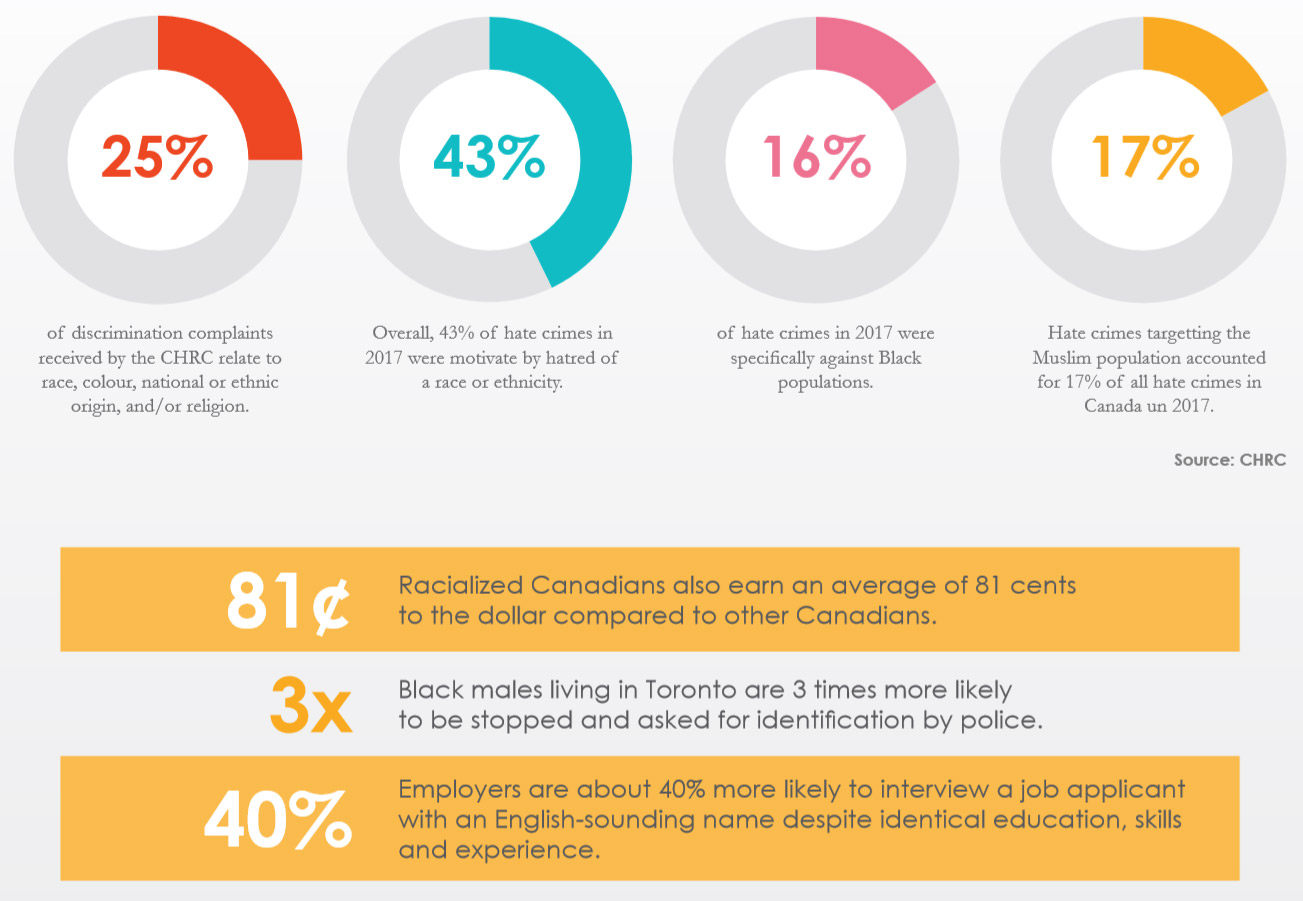
Figure 1: Discrimination and hate crime statistics – text version
- 25% of discrimination complaints received by the CHRC in 2016 relate to race, colour, national or ethnic origin, and/or religion.
- 43% of hate crimes in 2017 were motivated by hatred of a race or ethnicity.
- 16% of hate crimes in 2017 were specifically against Black populations.
- 17% Hate crimes targetting Muslims accounted for 17% of all hate crimes in Canada in 2017.
- 81¢
- Racialized Canadians earn an average of 81 cents to the dollar compared to other Canadians.
- 3x
- Black males living in Toronto are 3 times more likely to be stopped and asked for identification by police.
- 40%
- Employers are about 40% more likely to interview a job applicant with an English-sounding name despite identical education, skills and experience.
Police-reported hate crimes data is one way that we are seeing evidence of the racism and discrimination experienced by racialized and religious minority communities. Police-reported hate crime data peaked sharply in 2017, marking a 47% increase from the previous year. This was mostly the result of an increase in hate-related property crimes, such as graffiti and vandalism. Those incidents were mainly targeting Muslim, Jewish, and Black populations and accounted for most of the national upsurge. The number of hate crimes in 2018 declined slightly by 13% but remains higher than any other year since 2009, with the exception of 2017.
Canada is not immune to the global rise in ethnic nationalist rhetoric, anti-immigrant sentiment and xenophobia. Given the importance and reach of social media in society, its powerful role in spreading hate speech and bigotry cannot be neglected. This is especially true among young people for whom social media has tremendous influence. Online disinformation has the potential to decrease social cohesion and propagate racism and hate online. Furthermore, online content filtration technologies can reduce Canadians’ exposure to differing views and increase polarization. Constant exposure to unreliable sources of information is now part of Canadians’ online experience. An informed citizenry able to discern false and misleading content is the best protection possible against online disinformation. As such, equipping Canadians with the tools they need to navigate the new information ecosystem continues to be important.
Part one of this report summarizes the accomplishments of the Multiculturalism Program within the Department of Canadian Heritage, as well as other initiatives undertaken by the Department of Canadian Heritage and its portfolio organizations that contribute to the implementation of Canada’s Multiculturalism Policy.
Part two of this report summarizes how other federal institutions met their obligations under the Canadian Multiculturalism Act, in four thematic areas:
- Collection of Data,
- Education and Awareness,
- Prevention and Solutions, and
- Promotion and Celebration.
This section demonstrates how federal institutions are meeting the requirements of the Act and highlights a series of promising practices that reflect Canada’s multicultural reality.
Part 1: Canadian Heritage
Multiculturalism Program Overview
The Canadian Multiculturalism Act aims to foster mutual respect among Canadians, to encourage equitable participation in society for people of all ethnic, racial and religious backgrounds, and to promote a sense of attachment and belonging to Canada. The Act directs the Minister to develop and deliver programs and practices to support its implementation. The Multiculturalism Program leads work across the federal government to advance the implementation of the Act, and aims to:

Multiculturalism Program infographic – text version
- Build an integrated, socially cohesive society
-
- By building bridges to promote intercultural and interfaith understanding;
- By fostering civic memory, pride and respect for democratic values; and
- By promoting equal opportunity for individuals of all origins.
- Improve the responsiveness of institutions to the needs of a diverse population
- By assisting federal and public institutions to become more responsive to diversity by integrating multiculturalism into their policy and program development and service delivery.
- Actively engage in discussions on multiculturalism and diversity at the international level
- By promoting Canadian approaches to diversity as a successful model while contributing to an international policy dialogue on issues related to multiculturalism.
In order to deliver on these objectives the Multiculturalism Program focusses its work on five areas of activity:
Community Investments – the Community Support, Multiculturalism, and Anti-Racism Initiatives Program (CSMARI) formerly titled Inter-Action, delivers grants and contributions funding under three components: projects, events and community capacity building. An additional component called Community Support for Black Canadian Youth Initiative provides funding for projects that address the unique challenges faced by Black Canadian youth.
Strategic Policy – provides evidence-based policy advice on the overall legislative, policy and regulatory framework for the operation of the Canadian Multiculturalism Act. The directorate also conducts monitoring, research and analysis of the needs and interests of diverse groups and of emerging trends and issues in the areas of multiculturalism, diversity and inclusion.
Public Outreach and Promotion – conducts outreach and educates the public about multiculturalism initiatives such as Asian Heritage Month, Black History Month and Canadian Multiculturalism Day to increase awareness, understanding and public dialogue about multiculturalism in Canada.
Support to Federal and Public Institutions – supports federal institutions to meet their obligations under the Canadian Multiculturalism Act, and to share challenges, best practices, and resources to improve implementation of the Act.
International Engagement – supports Canada’s participation in international agreements and bodies, such as the International Convention on the Elimination of Racial Discrimination (CERD) and the International Holocaust Remembrance Alliance (IHRA).
Key Federal and International Commitments
In last year’s Annual Report (2017-18), Canada welcomed and responded to recommendations stemming from Canada’s appearance before the United Nations’ Committee on the Elimination of Racial Discrimination (CERD)Footnote 2 in 2017, and the Standing Committee on Canadian Heritage, in its Tenth Report entitled “Taking Action Against Systemic Racism and Religious Discrimination Including Islamophobia”Footnote 3 (2018). These two committees recommended ways in which Canada could benefit from a renewed federal coordinated approach aimed at addressing barriers faced by racialized communities, religious minorities and Indigenous Peoples – along with the need for more and better data to effectively address institutional racism.
In Fiscal Year 2017-18 an evaluation of the Multicultural Program was carried out covering the period from April 1, 2011, to March 31, 2017. The findings of this assessment were made public in March 2018 and pointed to the need for: renewed objectives; a review of the Program’s structure; improved data instruments and measures; revised project eligibility criteria to address systemic regional and local issues; and the implementation of measures to ensure service standards are met. The evaluation recommendations were used to inform the work of the Multiculturalism Program throughout 2018-19. The following provides an overview of the Program’s key achievements in the last year.
Multiculturalism Program Highlights
In order to increase its capacity to meet the new and emerging priorities, the Program changed its structure and the design of its programming. This included the establishment of the Multiculturalism Branch in 2018 within Canadian Heritage, which brought together all the aforementioned key functions of the program including: grants and contributions, strategic policy, public outreach and promotion, support to federal public institutions, and international engagement.
As committed in 2018, Canadian Heritage received $23 million over two years to strengthen the Multiculturalism Program. This included $21 million in grants and contributions funding dedicated to address racism and discrimination with a particular focus on Indigenous Peoples, and racialized women and girls, and $2 million for cross-country consultations on a new national anti-racism approach, bringing together experts, community organizations, citizens and interfaith leaders to find new ways to combat racism and discrimination.
In 2018, the Inter-Action Program was rebranded as CSMARI to reflect the new objectives of the Multiculturalism Program’s grants and contributions. Two new components were added to the revised funding program, “Community Capacity-Building” and “Support for Black Canadian Youth”. These revisions support the Program in funding community actions targeting racialized communities, Indigenous Peoples and religious minorities, and to better support unique local and regional needs.
In 2018, additional changes were made to the Program’s terms and conditions, notably to the Program’s Events component to raise the maximum amount payable from $25,000 to $100,000 per event, to remove the requirement of matching cash funding, and to permit the celebration of single community events. As a result of these changes, the Program has seen a significant increase in requests for Events funding (Figure 2).
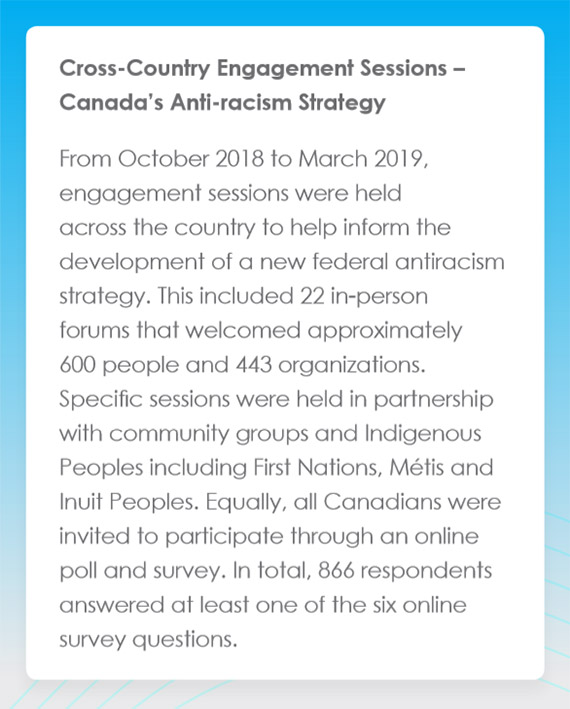
Cross-Country Engagement Sessions – Canada’s Anti-racism Strategy – text version
From October 2018 to March 2019, engagement sessions were held across the country to help inform the development of a new federal antiracism strategy. This included 22 in-person forums that welcomed approximately 600 people and 443 organizations. Specific sessions were held in partnership with community groups and Indigenous Peoples including First Nations, Métis and Inuit Peoples. Equally, all Canadians were invited to participate through an online poll and survey. In total, 866 respondents answered at least one of the six online survey questions.
The new CSMARI Program components are as follows:
- The Events component provides funding to community-based events that foster intercultural and interfaith understanding, civic memory and pride;
- The Projects component provides funding for community development, anti-racism initiatives, and engagement projects that promote diversity and inclusion by promoting the expression of Canada’s multiple identities; and
- The Community Capacity-Building component provides funding for capacity building projects that will contribute to the recipient’s ability to promote diversity and inclusion, and help achieve strengthened governance, develop a communication strategy, and build partnerships.
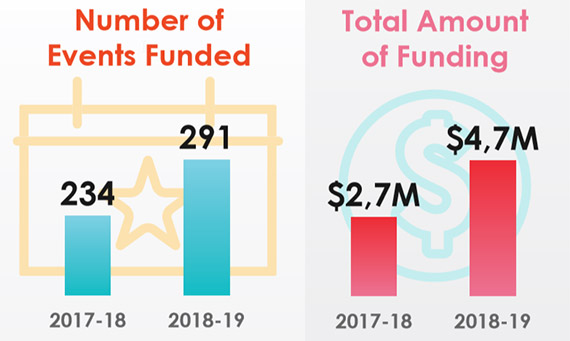
Figure 2: Number of events funded and total amount of funding – text version
| 2017-2018 | 2018-2019 | |
|---|---|---|
| Number of Events Funded | 234 | 291 |
| Total Amount Funding | $2.7M | $4.7M |
These changes in the CSMARI Program collectively represent an increase of 24% in terms of the number of supported events and 71% in terms of total dollar value.
In 2018, the government also committed $9 million over three years to Canadian Heritage to address issues related to Black Canadian youth and $10 million over five years to the Public Health Agency to address the challenges faced by Black Canadians by supporting culturally focused mental health programs.
To address the government commitment, a new component, Community Support for Black Canadian Youth, was added to the CSMARI Program. This component funds projects that address the unique challenges faced by Black Canadian youth by:
- Combatting discrimination through awareness raising and/or digital literacy;
- Providing opportunities for Black Canadian youth, and empowering them through the promotion of Black history, culture and identity; and
- Developing leadership skills and civic engagement for Black Canadian youth.
Funding also supported engagement with Black Canadian youth; development of an education and awareness campaign; research on issues specific to Black Canadians; and, the development of a robust performance measurement framework for the approach as a whole.
CSMARI – Grants and Contributions Program
In 2018-19, the CSMARI Program funded 51 projects and 291 community-based events that promote diversity and inclusion by encouraging positive interaction among Canadians communities of all origins. These projects and events contribute to building an integrated, socially cohesive society. Thus far, almost one million Canadians have been reached through CSMARI funding.
Public Outreach and Promotion
The Multiculturalism Program’s ongoing public outreach and promotional activities traditionally include Black History Month, Asian Heritage Month, various web-based resources, and other initiatives. These activities allow all Canadians to be exposed to new narratives around multiculturalism, while genuinely representing the wide diversity that exists within Canadian society. Both Black History Month and Asian Heritage Month were promoted through social media kits that included downloadable education posters, which highlighted the campaign theme, and were made accessible to schools, libraries, museums and the public upon request. Funding was also facilitated through the CSMARI Program’s Events component for communities who wanted to celebrate those cultural heritages locally.
Black History Month
Every February, Canadians are invited to participate in Black History Month festivities and events that honour the legacy and the many contributions of Black Canadians, past and present. In 2019, the theme of the Government of Canada’s Black History Month campaign was Black Canadian Youth: Boundless, Rooted and Proud. The following is one example of the many activities that were launched during this month.

Iqaluit Holds First Ever Black History Month
The capital of Nunavut, Iqaluit, kicked off the month of February with its first opening ceremony for Black History Month. Unknown to many Iqaluit residents and most Canadians, people of African descent have been present in the Canadian territory since the early 1600s. Jean Augustine, the first Black woman elected to the House of Commons, was a keynote speaker at this event at Iqaluit’s Cadet Hall. The event was a resounding success, demonstrating the bridge built between Inuit and African cultures throughout Canadian history. The activities also shed light on the experiences of racism and discrimination that Black Canadians and Inuit still face today. Approximately 100 Iqaluit residents of all backgrounds took part in this event, Iqaluit is becoming increasingly diverse by welcoming immigrants from around the world.

Asian Heritage Month
Asian Heritage Month honours the many achievements and contributions of Canadians of Asian origin who, throughout history, have done so much to make Canada the culturally rich nation it is today. The theme for the 2019 Asian Heritage Month campaign was Asian Canadian Youth: Shaping Canada’s Future. The campaign brought attention to the role that Asian Canadian youth are playing in our society and their contributions to our Canadian identity. The history of Asian immigration in Canada can be traced back more than 150 years.

MS St.-Louis Official Apology
On November 7, 2018, the Prime Minister delivered a formal apology in the House of Commons regarding the fate of the MS St. Louis and its passengers. In 1939, Canada turned away 907 German Jews seeking asylum; 254 later lost their lives in the Holocaust. The Prime Minister apologized to the passengers, their families, and Jewish communities in Canada and around the world. The Prime Minister apologized to the Jewish refugees Canada turned away, and for the antisemitic “none is too many” immigration policy that led to the MS St. Louis incident.
“Today, I rose in the House of Commons to issue a long overdue apology to the Jewish refugees Canada turned away. By issuing this apology, it is my sincere hope that we can shine a light on this painful chapter of our history and ensure that its lessons are never forgotten. Antisemitism, xenophobia, and hatred have no place in this country, or anywhere in this world. Recent attacks on the Jewish community attest to the work we still have to do. We must always stand up against xenophobic and antisemitic attitudes and hate in all its forms”.Footnote 4

Commemorative National Months Adopted in 2018-19
In keeping with the rich cultural heritage of our country and the spirit of the Multiculturalism Policy, which acknowledges the freedom of all members of Canadian society to preserve, enhance and share their cultural heritage, the Parliament of Canada passed two new parliamentary initiatives proclaiming the invaluable contribution of the Filipino and Latin American communities to Canadian society. Since 2018, June is now recognized as Filipino Heritage Month and October as Latin American Heritage Month to honor these communities who have made and continue to make undeniable contributions to the country’s social, economic and political fabric. These months present an excellent opportunity for Canadians to learn more about these communities.

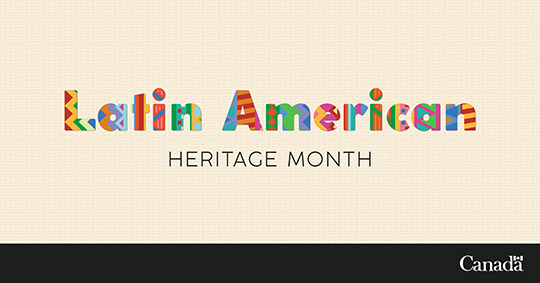
International Engagement
The Multiculturalism Program’s activities extend beyond Canada’s borders. By participating in international fora, and supporting Canada’s international commitments, the Program learns from, and contributes to the international policy dialogue on diversity and advances the objectives of the Canadian Multiculturalism Act.
International Convention on the Elimination of Racial Discrimination
Canada is a signatory to the United Nations International Convention on the Elimination of Racial Discrimination which promotes and encourages universal respect for, and observance of, human rights and fundamental freedoms for all without distinction based on race, sex, language or religion. As mentioned earlier in this report, Canada’s discussions with the CERD provided an opportunity to look at our work objectively and to improve initiatives to combat racism.Footnote 5
International Holocaust Remembrance Alliance
Initiated in 1998, the IHRA is a coalition of member countries governed by the principles expressed in the Declaration of the Stockholm International Forum on the Holocaust (Stockholm Declaration). Canada became a member of the IHRA in 2009. Through its membership, Canada has had the opportunity to share its expertise in Holocaust education, research and remembrance, and plays a central role as a conciliator and bridge builder. In 2018, IHRA established a 5-year priority of safeguarding the record and countering distortion of the Holocaust. A working definition of Holocaust Denial and Distortion had been previously adopted by IHRA under Canada’s 2013 Chairmanship. Also in 2018, the European Union became a Permanent International Partner of the IHRA.
Key Initiatives at Canadian Heritage: Enhancing the Multiculturalism Mandate
The Department of Canadian Heritage and its portfolio organizations have been leaders in advancing the Government’s priority of diversity and inclusion. They work to fulfill the mandate of preserving and enhancing multiculturalism by promoting and recognizing Canadians’ ethnocultural diversity in their programs, policies and services.
The Department supports culture, the arts, heritage, official languages, citizen engagement and participation, youth and sport initiatives and Indigenous languages and cultures. It is through these programs and those of its many portfolio agencies that Canadian Heritage promotes and builds multiculturalism and diversity in Canada.
The following are some initiatives undertaken by the Department of Canadian Heritage and its portfolio organizations in 2018-19 that helped enhance multiculturalism.
Creative Export Strategy
In June 2018, The Creative Export Strategy was launched with an investment of $125 million over five years to help Canadian creative entrepreneurs maximize their export potential. The Strategy expands market opportunities for Canadian creative industries and promotes Canada’s cultural sector abroad. It proposes a modernized approach adapted to the challenges faced by the creative industries today.
The following are three activities the Strategy supported in 2018-19 that helped Canadian creative entrepreneurs expand their global reach and further their international business objectives:
- A total of 24 projects were funded across Canada under the Creative Export Envelope of the Canada Arts Presentation Fund, including support for the Canadian Arts Presenting Association to lead a delegation of Canadian arts presenters to ENARTS (École Nationale des Arts) Performance Arts Encounter in Mexico in October 2018;
- Canadian Heritage led successful trade missions in collaboration with Global Affairs Canada to China (April 2018) and to Latin America (February 2019), in which nearly 100 Canadian businesses across the creative sectors participated, resulting in
44 commercial agreements; and - Through its financial support, the department enabled creative businesses to promote their creations directly to serious international buyers during trade events such as the Guadalajara Book Fair (Mexico), the Edinburgh Festival (Scotland), and the Mercado, Industria, Cine y Audiovisual (Mexico).
Canada Media Fund
The Canada Media Fund (CMF) aims to foster, promote, develop and finance the production of Canadian content and relevant applications for all audiovisual media platforms, to deliver timely and personalized content to Canadians. Organizations supported by the CMF include, among others, Canadian television and digital media production companies. Indigenous communities, official language minority communities, as well as communities with other languages, benefit from special production funding envelopes through contributions.
Of the $352 million in CMF’s budget, 0.9% was allocated to the Diverse Languages Program. With the Indigenous Program envelop included, this percentage increases to 3.3% in 2018-19. The Diverse Languages Program supports productions reflecting Canadian diversity by funding projects in languages other than English, French, or Indigenous languages.
Canada Council for the Arts
The Canada Council for the Arts’ mandate is to foster and promote the study and enjoyment of, and production or works in, the arts. Canada Council Peer Assessment Program is the basis for the majority of the Council’s decisions on which artists, projects and organizations receive funding. Peer assessors are selected for their diversity of professional specialization; artistic practice; demographics (age, gender, ethnicity); and regions, to intentionally avoid homogenous types of arts.
The Canada Council for the Arts provides context briefs on diverse artistic practices that peers may not be familiar with to foster understanding of emerging or lesser-known artistic practices. It aims to educate them in considering the historical and current cultural contexts, as well as barriers faced by designated priority groups, when assessing and scoring applications. Examples include culturally diverse arts, and cultural appropriation.
Sport Canada
Sport Canada promotes and enhances Canadian participation in sport, from initial introduction to sport to the highest levels through transfer payments and policy leadership. It ensures that all Canadians have access to quality aligned sport programs in a safe and welcoming environment regardless of race, gender or physical disability, with the aim of fostering the development of high-performance athletes, coaches, officials, leaders and organizations within the Canadian Sport System. It also assists Canadian communities in hosting the Canada Games and international sport events.
The following highlights some activities that took place in sports for 2018-19:
- The Minister’s Working Group on Gender Equity in Sport was launched to address participation challenges and to propose ideas, approaches, and strategies for eliminating barriers that prevent increased participation of women and girls in sport. This working group also provided perspectives and insights on how to achieve gender equity in sport by 2035, by discussing how to deliver programming specifically for women and girls in sport, addressing gender-based violence in sport, including sexual harassment, and how to increase the representation of women in sport leadership positions;
- Funding in the amount of $47.5 million over five years, and $9.5 million per year ongoing were provided to expand the use of sports for social development in more than 300 Indigenous communities. The government has worked closely with the Aboriginal Sport Circle in the design and implementation of this initiative;
- The 2019 Canada Winter Games were held in Red Deer, Alberta from February 15 to March 3, 2019. Over 3,600 participants, 5,000 volunteers, 20,000 visitors enjoyed 19 sports and 10 nights of cultural entertainment as part of Canada’s largest multisport and cultural event for youth. The Games included events for athletes with a disability, a Women in Coaching Program, an Aboriginal Apprentice Coach Program, and an Indigenous Officials Pilot Program. The 2019 Canada Games also included the launch of the Canada Games Council’s gender inclusion policy and responsible coach training program.
Exchanges Canada Program
The Exchanges Canada Program offered opportunities for over 13,900 youth to enhance their knowledge and understanding of Canada; to create linkages with one another; and, to enhance their appreciation of the diversity and shared aspects of the Canadian experience. Through participation in forums and group exchanges, youth had the opportunity to connect with other youth and learn about Canadian history, geography, industry, institutions, communities, cultures, and languages.
As a result of their participation in the Exchanges Canada Program, 90% of youth reported that they created new ties with people from other communities; 87% of youth participants reported that they enhanced their appreciation of how diverse Canada is; 83% agreed that they learned new things about Canada; 82% reported having a better understanding of what Canadians have in common; and 81% reported an increased sense of attachment to Canada.
Part 2: Implementation of the Canadian Multiculturalism Act across Federal Institutions
Methodology and Approach to Analysis
Part two of the Annual Report follows the structure of Section 3.2 of the Canadian Multiculturalism Act, which describes the responsibilities of federal institutions concerning multiculturalism. The Canadian Multiculturalism Act recognized the crucial role federal organizations could play in preserving and enhancing multiculturalism in Canada. In addition to directing federal institutions to “carry on their activities in a manner that is sensitive and responsive to the multicultural reality of Canada,” the Act instructs federal organizations to address equal opportunity in federal institutions, promote capacity building, enhance the understanding of and respect for diversity, collect research and data that support the development of relevant policies, programs, and practices, and make appropriate use of the language skills and cultural knowledge of individuals of all origins.
To gather information from federal institutions for this year’s Annual Report, Canadian Heritage distributed questionnaires to government institutions of all sizes and mandates. The questionnaires aimed to identify and assess the federal government’s efforts in raising their workforce and society’s awareness and acceptance of Canada’s cultural diversity and inclusivity. This Report seeks to offer a snapshot of the activities undertaken by federal institutions in support of the operation of the Act, along with ensuring accountability and space for shared promising practices.
Of the 159 departments that received the questionnaire, 105 submitted a response. Each questionnaire had approximately 20 questionsFootnote 6 divided into three sectionsFootnote 7. The input received was reviewed and analyzed based on the following four themes from Section 3.2 of the Canadian Multiculturalism Act.
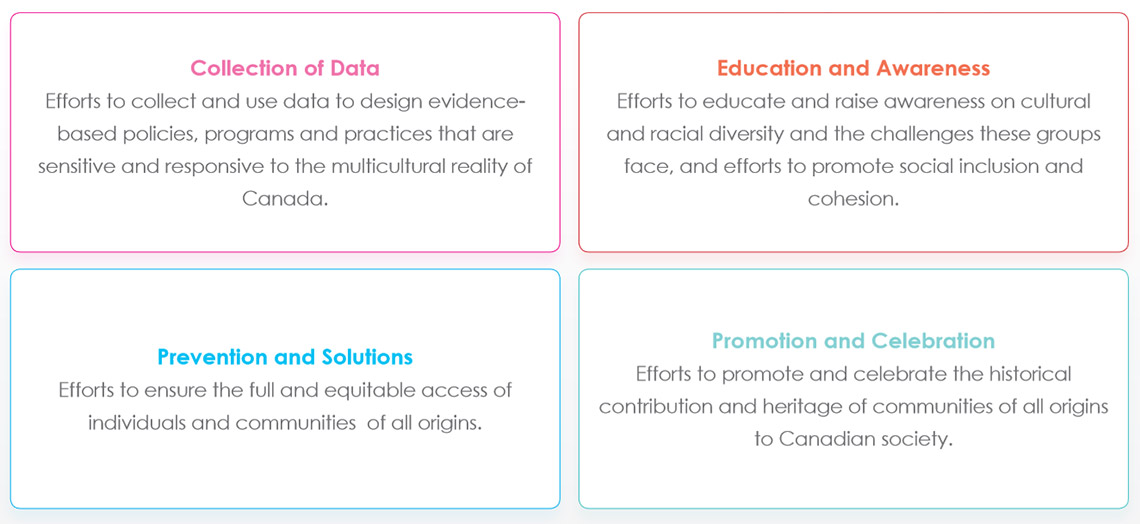
The four themes from Section 3.2 of the Canadian Multiculturalism Act – text version
- Collection of Data
- Efforts to collect and use data to design evidence-based policies, programs and practices that are sensitive and responsive to the multicultural reality of Canada.
- Education and Awareness
- Efforts to educate and raise awareness on cultural and racial diversity and the challenges these groups face, and efforts to promote social inclusion and cohesion.
- Prevention and Solutions
- Efforts to ensure the full and equitable access of individuals and communities of all origins.
- Promotion and Celebration
- Efforts to promote and celebrate the historical contribution and heritage of communities of all origins to Canadian society.
The initiatives highlighted below are a sample of the many initiatives that were submitted by federal institutions for inclusion in this year’s Report.
Federal Institutions Highlights – Thematic Analysis
Promising Practices Highlights
Collection of Data
Many government departments and agencies are increasingly harnessing the power of data to make better decisions and ultimately better serve Canadians. Data provides a strong foundation for better policies, programs and practices and overall strengthens the evidence-based work of government.
For this year’s Annual Report, federal institutions were asked to report on whether they collect statistical racial, ethnic and religious diversity data other than Employment Equity (EE) data and if they used the data to develop or improve internal and external policies, programs, practices and services. These questions were included in the submission form to get a better sense of institutions’ ability to collect data in support of internal and external policies, programs, and services, the type of data that is collected and the purpose for its collection.
Forty-three percent of federal institutions reported that they collected data to support their internal (32%) and external (11%) programs, policies, services and initiatives, 35% indicated that they do not collect data, and 22% provided no information (Figure 3). Only 5% of federal institutions stated that they collect data both internally and externally.Footnote 8 Institutions that collected data mainly did so through surveys to better understand the challenges experienced by individuals based on gender, age, religion, culture, ethnicity, and education-level. Specifically, collecting such data enabled institutions to provide customized support to their staff or clients based on their perspective and specific needs; to gain a multidimensional understanding of the diversity within their workplace (beyond EE data) and correct the issues identified; to understand clients and employees’ belief system, and behavior, amongst other reasons. Smaller institutions noted that data collection can be a challenge, as the size of their organizations make it difficult to preserve the privacy of employees or those to whom they provide services.
This shows a significant improvement of results compared to last year’s Annual Report. This year, only 35% of federal institutions reported that they did not collect data on racial, ethnic and religious diversity compared to 55% last year.
Multiculturalism and Employment Equity are not the same thing.
Employment equity focuses on four designated groups – women, Aboriginal peoples, person with a disability, and members of visible minorities – in the workplace. Multiculturalism has a wider scope, encouraging the participation of all ethnocultural groups in the social, cultural, economic and political life of Canada.
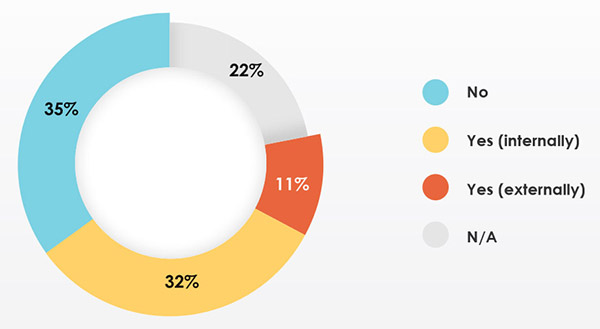
Figure 3: Federal Institutions That Collect Data (other than EE Data) Internally or Externally – text version
- 35%
- No
- 32%
- Yes (internally)
- 11%
- Yes (externally)
- 22%
- N/A
The Government of Canada continues to embrace the importance of data in its policy development. It is committed to ensuring that ongoing workplace improvement is based on evidence, such as that collected through the Public Service Employee Survey (PSES), which is managed by the Treasury Board of Canada Secretariat. The PSES allows the federal public service to identify what it is doing well and what it could be doing better, from the perspective of its employees, in order to ensure the continuous improvement of people management practices in government.
In 2018, 163,121 employees in 84 federal departments and agencies responded to the Public Service Employee Survey, for a response rate of 57.7%. Some of the results of the survey included information on the experience of employees with discrimination on the job in the previous 12 months. In 2018, 8% of employees who responded to the survey indicated that they had been the victim of discrimination and individuals with authority (77%) and co-workers (36%) were the most frequently cited sources of discrimination. The most common types of discrimination experienced were sex (29%), age (26%) and race (25%). Of those who had indicated they had been discriminated against, 6% filed a grievance or formal complaint, and 49% took no action. The survey results will allow federal departments and agencies to identify their areas of strength and concern related to people management practices, benchmark and track progress over time, and inform the development and refinement of action plans. Better people management practices lead to better results for the public service, and in turn, better results for Canadians.
This section highlights some of the multiculturalism research and data collection activities undertaken by federal institutions during this reporting period:
| Name of federal institution | Initiative |
|---|---|
| Business Development Canada (BDC) | Recognizing the barriers that exist for many newcomers, BDC established a “Newcomer Entrepreneur Success Team” (NEST), a group of employees dedicated to supporting newcomer entrepreneurs. Collection of data on languages has enabled BDC to determine which languages would be offered for the NEST program and in what priority. |
| Canada Mortgage and Housing Corporation (CMHC) | The institution has expanded and advanced its people analytics capabilities. CMHC gathers demographic data through its Employee Engagement Survey to develop a Diversity Index and Inclusion Index. The Diversity Index has influenced their workplace transformation, communications and branding. An Inclusion Index was added in 2018 to improve understanding of the dynamics of inclusion and group-based marginality at CMHC. |
| Canadian Human Rights Commission (CHRC) | This institution collects complaints related data for internal and external purposes. Internal data is used to track the nature and outcome of complaints. CHRC collects racial, ethnic and religious data when related to the substance of complaints. This data is used internally in the development of policies, reporting purposes and position statements and externally for CHRC submissions to Parliament or other external stakeholders, and media releases. In addition, CHRC used national survey statistics for the fourth report in their equality rights series to look at how visible minority adults in Canada fare compared to non-visible minority adults, based on the seven dimensions of well-being (social, emotional, spiritual, environmental, occupational, intellectual and physical wellbeing). |
| Destination Canada (DestCan) | Destination Canada established its market research approach by collecting country-specific data on international travelers’ behaviors. This information helps to inform various marketing programs and activities that target international travelers to visit Canada. |
| National Research Council Canada (NRC) | The purpose of the Equity, Diversity and Inclusion (EDI) program is to support NRC’s commitment to building a diverse and representative workforce, ensuring that NRC’s work with clients, partners and entrepreneurs is free from racial discrimination, barriers, and contribute to a more inclusive NRC and innovation system. Nationality data is collected upon hire. This data is used to understand the diversity of the NRC workforce. Data on visible minorities and Indigenous Peoples, collected through the self-identification process, is used to inform decisions on the development and implementation of programs and policies to support equitable recruitment, retention; and to identify and address challenges that limit members of these groups from accessing opportunities that should be available to all employees. |
| Social Sciences and Humanities Research Council of Canada (SSHRC) | This institution collects self-identification data from applicants for research grants and scholarships to monitor the equity performance of SSHRC’s programs and to design new measures that achieve greater equity, diversity and inclusion in the research enterprise. |
| Statistics Canada (StatsCan) | The Centre for Gender, Diversity and Inclusion Statistics is focused on three key goals and objectives, which include regular reporting to Canadians, generating new information to address data gaps, and building statistical capacity by sharing and collaborating with new and existing partners. Among other activities, the Centre developed a public-facing data hub, which includes the theme of immigration and ethnocultural diversity to support evidence based policy development and decision-making— both within the federal government and beyond. In 2018-19, an infographic and a booklet on Canada’s Black population, released during Black History Month, presented and celebrated the demographic growth and diversity of the Black population in Canada and helped inform the public and policymakers. |
Education and awareness
Public education and awareness remain two of the most effective ways to counter racism and discrimination, particularly with regard to understanding the multidimensional origins of racism and its use to oppress specific groups, and to deconstructing racial stereotypes and narratives that perpetuate prejudice, violent rhetoric and xenophobic sentiments.
In their submissions, federal institutions were asked to indicate if they had a Multiculturalism Champion in place who is responsible for issues related to Multiculturalism. Close to 9 in 10 institutions (87%) reported that they have a designated senior manager or champion who is responsible for the day-to-day implementation of the Canadian Multiculturalism Act for their respective federal institution, compared with 13% who did not. (Figure 4) In most cases, senior departmental managers or human resources personnel serve as the champion.
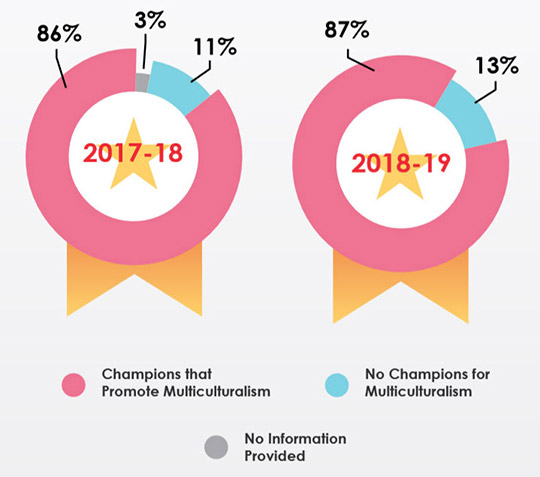
Figure 4: Federal Institutions with Champions that serve to promote multiculturalism in the workplace - text version
| 2017-2018 | 2018-2019 | |
|---|---|---|
| Champions that Promote Multiculturalism | 86% | 87% |
| No Champions for Multiculturalism | 11% | 13% |
| No Information Provided | 3% |
Federal institutions were also asked about the participation of their employees in anti-racism and racial discrimination training.
In 2018, compared to 2017, a slight increase was measured in training provided by federal institutions to sensitize their staff on a broad spectrum of challenges that impede the daily experience, mental health, personal and professional development of the workforce (Figure 5). However, more than half of the submission forms received indicated that their training in anti-racism and discrimination came from courses offered by Canada School of Public Service, such as “Creating a Respectful Workplace”. Most of the training cited in the submissions was not exclusively anti-racism and discrimination training, but rather anti-racism and discrimination was a minor component of the training. The types of training most cited by institutions included training on diversity and inclusion, respectful workplaces, harassment and discrimination, values and ethics, and GBA+ training. While this approach may be standard, institutions should consider specific anti-racism and racial discrimination training capable of addressing those subjects in more depth.
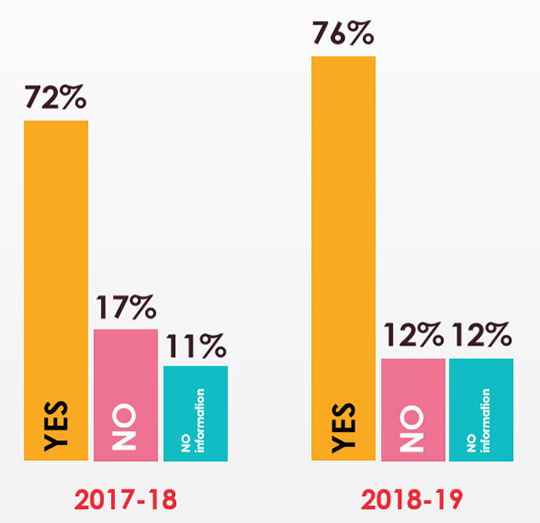
Figure 5: Federal Institutions That Have Provided Training on Anti-racism and Racial Discrimination – text version
| 2017-2018 | 2018-2019 | |
|---|---|---|
| Yes | 72% | 76% |
| No | 17% | 12% |
| No Information | 11% | 12% |
It is important for federal departments and agencies to strengthen understanding of the many ways people are subject to or are perpetuating systemic racism. Conversations on racism should be taking place in a space that is both honest and solution-oriented, by identifying and addressing the historical barriers that negatively affect racialized groups, religious minorities and Indigenous Peoples in their day-to-day lives. It is essential to provide opportunities to educate and raise awareness about the challenges and obstacles, as well as to develop mutual respect and thoughtfulness to create an inclusive, welcoming society.
The following are illustrative examples of education and awareness initiatives that were noted in the submissions received from federal institutions:
| Name of federal institution | Initiative |
|---|---|
| Atlantic Canada Opportunities Agency (ACOA) | The institution organized intercultural competency training, which promotes cultural awareness, intercultural skills and competencies to employees to help them identify and stop patterns of racial discrimination. |
| Atlantic Pilotage Authority (APA) | In response to the lack of cultural and gender representativeness in the Canadian Marines’ organizational structure, APA organized, in collaboration with the Nova Scotia Community College Nautical Institute, a roundtable discussion titled “Increase Diversity in the Marine Industry”. This roundtable aimed to attract more women and Indigenous Peoples to the workspace, discuss safety in the work environment (including racism, and sexual harassment preventions), and identify barriers faced by ethnic minorities in the Marine Industry. It was also a necessary step in preparation for ongoing comprehensive action towards convincing more Canadians to consider a career in uniform by ensuring the hiring, and the full and equitable participation of individuals from all origins. |
| Canadian Human Rights Commission (CHRC) | CHRC hosted a “Fast Talk on Hate and Intolerance” roundtable with experts to identify the policy, legislative and regulatory barriers to justice, and potential roles for the CHRC in combating the rise of hate crime incidents and speech in Canada. Written submission and testimonials informed the development of the objectives, action items and deliverables in CHRC’s strategic action plans. As well, CHRC, in collaboration with Public Safety Canada and the Public Policy Forum, organized a panel discussion on online hate and intolerance. This panel helped participants to gain knowledge on practical ways to combat online hate and ways to provide appropriate community support and recourse mechanisms to victims of hate crimes. Members of the panel included several people with significant experience in combatting hate and intolerance. |
| Canada Pension Plan Investment Board (CPPIB) |
CPPIB reassessed their “Impact of Unconscious Bias Training” and identified its limitations to reassess its requirements, and pilot a new workshop called “Managing through Inclusion.” This workshop served to better arm managers with the tools to foster inclusivity and productivity. The success of the pilot sessions provided the grounds to position this training as mandatory for all managers. Outcomes from this workshop included:
|
| Health Canada (HC) | Health Canada launched the “Building a Purposeful Career” initiative, which collectively engaged visible minorities in developing leadership, tangible skills, and learning from best practices to create and implement purposeful strategies that maximize potential and advances the careers of visible minorities. |
| Privy Council Office (PCO) | PCO organized an info-dialogue around the topic of “Building a More Inclusive PCO” to deliver the main concepts and tools that would lead to their organizational success, by: creating a more inclusive workplace, boldly examining and challenging their staff’s own racial biases (among other things), exploring the concepts of employment equity and diversity at PCO, and reflecting on their expectations and approach towards inclusion. |
| Public Service and Procurement Canada (PSPC) | PSPC organized a joint learning program named “Respecting Differences: Anti-Discrimination” for employees to recognize and appreciate why multiculturalism is an important Canadian value, along with articulating and understanding the advantages of having a workforce that is reflective of our diverse society. |
Prevention and Solutions
The Government of Canada must take a leading role in addressing systemic racism and discrimination when found to exist within our federal institutions and in public policies, programs and services. Accordingly, federal departments and agencies are taking concrete action to prevent and resolve racism and discrimination in all spheres of society by fostering the full and equitable access of individuals and communities of all origins and from all sectors. In this report, federal institutions were asked if they developed partnerships with relevant stakeholders to promote multiculturalism and/or learn more about multicultural communities. We believe that engaging with relevant stakeholders provides an opportunity for them to define and identify the challenges that they are facing, through their own words and perspective. Those consultations contribute to framing new objectives, while leveraging their expertise to prevent and dissolve barriers sustainably.
This year federal institutions reported an increase in efforts to collaborate with partners in the discussion and promotion of multiculturalism (Figure 6). Most of the submissions demonstrated that their focus in the prevention and solutions of racial discrimination is Employment Equity Action Plans, building on the job opportunities and advancements.
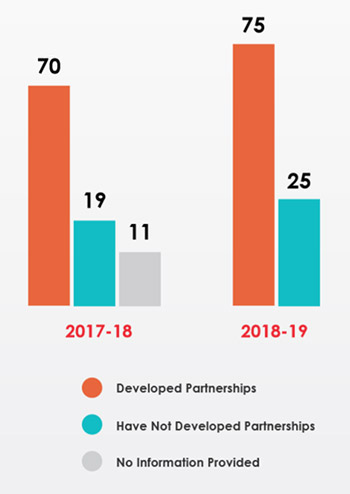
Figure 6: Federal Institutions That Have Collaborated with Critical Multicultural Experts/Stakeholders
| 2017-2018 | 2018-2019 | |
|---|---|---|
| Developed Partnerships | 70 | 75 |
| Have Not Developed Partnerships | 19 | 25 |
| No Information Provided | 11 |
A slight increase was also noted in the submissions received for this report, from 70% in 2017-18 to 75% in 2018-19. The following are illustrative examples of practical steps taken by federal institutions to apply an anti-racism perspective to decision-making. Considered as stepping stones to effective remedies, the initiatives reported below have helped anticipate and remove unconscious bias in future policies, programs and decisions:
| Name of federal institution | Initiative |
|---|---|
| Agriculture and Agri-Food Canada (AAFC) | AAFC’s Visible Minority Network hosted a series of career development workshops to support the upward mobility of racialized employees. The series included a roundtable discussion titled “Advancing Your Career and Setting the Stage for the Future,” where speakers, including racialized senior executives, shared their career experiences, lessons learned, practical strategies for career advancement, and recommendations on how to influence policies to help create an equitable environment for career development. The series also featured a “Problem Solving Through Coaching” workshop that empowered the network to think strategically through complex situations, explore innovative possibilities, and make decisions with confidence. This resulted in candid discussion, and ignited a sense of hope, empowerment, and perseverance among the participants. |
| Business Development Bank of Canada (BDC) | The institution established the initiative “Hire Immigrants Ottawa”, which heightens cultural awareness and puts to use multilingual skills to equip employees to be able to connect, break linguistic barriers, and communicate with more newcomer entrepreneurs beyond English and French. |
| Canada Lands Company Limited (CLCL) | Canada Lands Company collaborated with Clear View ConnectsTM, which is a 24-hour, confidential and anonymous reporting service that is designed to connect employees to their organization without fear of violating their confidentiality. This independent third party provides an impartial and objective assessment “to meet the specific needs of end-users, while providing a fully integrated, real-time Case Management System, that allows organizations to review anonymous employee reports online”. It offers a space for employees to express their concerns without fear of judgement, exclusion or reprisal. |
| Canada Revenue Agency (CRA) | CRA established the “Employee Third Language Capabilities Directory”, which lists the employees who are willing and available to volunteer their services to eliminate linguistic barriers between the federal institution and their clients. This initiative aims to encourage employees to learn and practice a third language, other than English or French, to ensure that all clients are at ease and accompanied throughout their fiscal inquiries and requirements. |
| Department of Justice Canada | The Department of Justice organized an engagement session with National Indigenous Organizations regarding the Justice Canada Strategic Action Plan to reduce the over-representation of Indigenous Peoples in the criminal justice system, whether as victims/survivors, or accused/offenders. |
| Innovation, Science and Economic Development (ISED) | The Federal Internship for Newcomers Program offers newcomers a chance to gain valuable Canadian work experience and training opportunities with federal, provincial and municipal organizations. The rationale of this program is to reduce the obstacles that prevent ethnic, racial, and religious minorities from entering ISED’s workplace, and increase diversity in the talent recruited into the department. ISED does so by hiring employees through casual or term contractual needs. |
| Royal Canadian Mountain Police (RCMP) |
Partnerships with prominent cultural, religious and educational organizations, allows the RCMP to engage with organizations such as:
|
Promotion and Celebration
Multiculturalism supports the belief that all citizens are equal. There is strength in uniting through diversity and celebrating multiculturalism. Multiculturalism also ensures that all citizens can maintain their identities, take pride in their ancestry and have a sense of belonging. Recognizing and celebrating the diversity of our history and heritage can contribute to the development of a shared sense of community identity, purpose and cohesiveness.
Federal institutions were asked to identify some of the activities they have undertaken to recognize and celebrate the heritage and contribution of the many communities that make up our diverse population. Institutions confirmed their commitment to promoting and celebrating our multicultural heritage by reporting a wide range of celebratory initiatives undertaken within their organizations including: Indigenous Awareness Week, International Day for the Elimination of Racial Discrimination, Indigenous Peoples Day, Multiculturalism Day, Black History Month, and Asian Heritage Month, among many others.
Many institutions engaged the public in their celebration of our diverse heritage. Smaller organizations have expressed that lack of resources impede their ability to participate in some key celebrations. However, a small increase was noted across all federal institutions in the promotion and celebration of our multicultural heritage for this year’s annual report, from 87% in 2017-18 to 90% in 2018-19 (Figure 7).
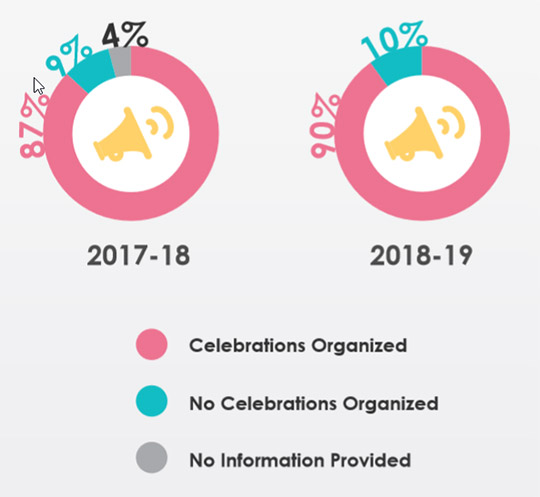
Figure 7: Federal Institutions That Have Celebrated and Promoted Racial, Ethnic and Religious Diversity
| 2017-2018 | 2018-2019 | |
|---|---|---|
| Celebrations Organized | 87% | 90% |
| No Celebrations Organized | 9% | 10% |
| No Information Provided | 4% |
Highlighted below are some of the varied ways in which federal institutions have promoted and celebrated our multicultural heritage during this reporting period:
| Name of federal institution | Initiative |
|---|---|
| Atomic Energy of Canada Limited (AECL) | Tapping into the inherent love for entertainment and new information of its staff, AECL organized a “Multicultural Jeopardy” event for employees to learn about other cultural, ethnic, and religious holidays to raise awareness regarding their significance and how they are celebrated around the world, creating a sense of discovery and interconnectedness. This initiative was a success and gathered more than half of their staff who actively participated in the activities. |
| Agriculture and Agri-Food Canada (AAFC) | AAFC organized the “Living Library”, which features employees from across the Department, who shared their life stories. The event aimed to explore the diversity within the Department, create positive dialogue, build open-mindedness and increase employees’ understanding of diversity through the retelling of different life experiences. The living “books”, which included two ethnic minorities and an Indigenous person, shared their experiences on topics such as transitioning from refugee to government executive, coming out in the workplace and being an advocate for LGBTQ2+ employees, and escaping domestic violence and building a better life. |
| Global Affairs Canada (GAC) |
For 10 days in November, at the Canadian embassy of Seoul, South Korea, GAC conducted the 2018 #InclusionMeans social media campaign, provinding a positive narrative about inclusion and cultural diversity. The campaign used Facebook, Twitter and Instagram to discuss topics of gender equality, LGBTQ2+, progressive trade, linguistic diversity and more. The signboards with hashtags, in three languages (Korean, English, and French) appeared in all posts to create a sense of unity as a series. The campaign reached over 40,000 users, including over 22,000 on Twitter, over 15,000 on Facebook and over 5,000 on Instagram. Canada’s mission also participated in “Together Day”, hosted by the Korea Immigration Service of the Ministry of Justice, a national commemorative day to promote a society where Koreans and foreign residents in Korea learn from and respect each other’s culture and traditions. Canada’s mission in Berlin supported the promotion of the inclusiveness, diversity and innovation of Canada’s cultural scene by funding strong German partner institutions for a total of 78 cultural projects. Among the projects was the celebration and promotion of indigenous perspectives on climate change in the Arctic. The tour included Madrid, Stockholm, Berlin, Potsdam, Stuttgart, and Paris. The mission supported major exhibitions at several important German art institutions reflecting the multicultural influences in Canadian contemporary art. |
Conclusion
This report presents an overview of what has been accomplished in 2018-19 in the promotion of Canada`s multiculturalism. Achievements have been highlighted and streamlined under the following four thematic areas: 1) Collection of Data, 2) Education and Awareness, 3) Prevention and Solutions, and 4) Promotion and Celebration.
Federal institutions have made strides in the development of promising practices in the collection of internal and external data on racial, ethnic and religious diversity. The use of disaggregated data on racial issues has contributed to identifying and responding more effectively to the specific needs and challenges raised by ethnocultural communities and religious minorities in various fora and consultation exercises. Federal institutions are also continuing to make improvements in providing more training on anti-racism and discrimination as main topics of education and awareness, rather than as small components of the training. An increase in efforts to collaborate with key stakeholders to promote more than multiculturalism was also noted as a means to clearly define, identify, and prevent racism and discrimination in all social spheres. Those critical partnerships are stepping stones to informing the conceptualization of evidence-based anti-racism practices that are sustainable in preventing and addressing racism. Lastly, federal institutions continued efforts to celebrate the cultural heritage and contributions of the many communities that make up Canada’s diverse society.
While progress has been made, opportunities exist to improve the ways in which federal institutions undertake their activities in support of the Canadian Multiculturalism Act. Training specifically on racial discrimination, outside of training about respect, diversity and civility in the workplace, could be implemented in more federal institutions. In addition, consideration could be given to reviewing institutional complaint mechanisms. Most complaint mechanisms in federal institutions deal with racial discrimination and harassment grievances through the same standard process. Developing solutions and understanding insidious forms of racism are essential to ensuring that the issue is effectively addressed. Lastly, federal institutions could consider how to commemorate multiculturalism events in a more meaningful manner, beyond the posting of messages on the intranet and email distributions to employees.
The preparation of this Annual Report would not have been possible without the valuable and steady collaboration of all federal institutions who have actively taken part in this yearly exercise. They are continuously making incremental changes to address the critical challenges that impede the effective implementation of Canada’s multiculturalism policy. Multiculturalism is an evolving and dynamic reality that requires the government to adapt and modernize its policies and programs as Canadian society evolves, while finding effective solutions to address racism and discrimination.
© Her Majesty the Queen in Right of Canada, 2019
Catalogue No. CH31-1E
ISSN 1497-7400
